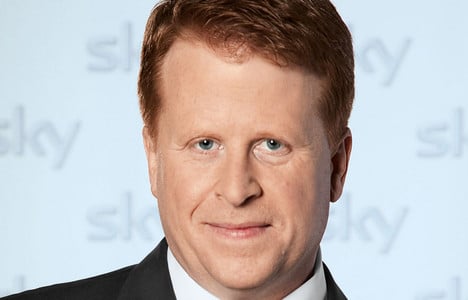
They may have the same name and the same largest shareholder – but the Sky pay-TV firms in the UK and Germany don’t appear to share a common view on the “second screen” TV opportunity.
In the UK, BSkyB is excitedly injecting its existing Sky+ app (an EPG, remote-recorder and channel changer) with social chatter and information that accompanies on-screen shows, promising: “Sky customers can interact more fully with content than ever before.”
But, in Germany, Sky Deutschland CEO Brian Sullivan tells DWDL.de:
“We at Sky do not believe in second screen apps, because all of these devices mean first screen to us.
“The audience does not want gimmicks for the live program on their smartphones. They want the program quickly and easily wherever they have it available.
“I do not like the term ‘second screen’. It sounds like it is worth less than the ‘first’ screen. Content and good television are the most important things for me. The viewers will see it the way they want it – whether on the big-screen TV, a notebook, tablet or smartphone.
“When we started digital TV almost 15 years ago in the UK, we thought that interactivity is important. But it turned out that this is not the secret behind our success.”
First + second = immersion
News Corp owns 39 percent of BSkyB and 49.9 percent of Sky Deutschland. Sullivan switched from BSkyB to Sky Deutschland in 2010.
Quality content, like Premier League soccer and first-run movies, has undoubtedly helped BSkyB attract 10 million customers. Most in the TV business seem to believe the primary screen should retain primacy in the viewing experience.
But, in the UK, BSkyB is also now taking a harder look at new opportunities to augment the primary experience. That includes regarding mobile devices as screens for this regular content — the Sky Go now service makes BSkyB TV accessible to subscribers on tablets, mobiles and internet-connected TVs.
But BSkyB has also invested in the Zeebox social second-screen app, which is powering the new Sky+ features.
The Sky+ app is already used by over one million users each month, BSkyB told paidContent — so a significant number of viewers is about to get new second-screen functionality when they upgrade.
Consumer appetite
For the last year, a glut of research has been issued showing growing consumer use of mobile and smartphones while they watch TV — much of it, it must be said, from vendors with services to sell off the back of the buzz.
The latest, out today, is a consumer survey from Research Now for Smartclip, which shows that 26 percent of Germans aged 14 to 49 nearly always use the internet whilst watching TV.
In aggregate, a total 85 percent of respondents said they nearly always, frequently or sometimes do so, with nine percent rarely doing so and seven percent never doing so.
